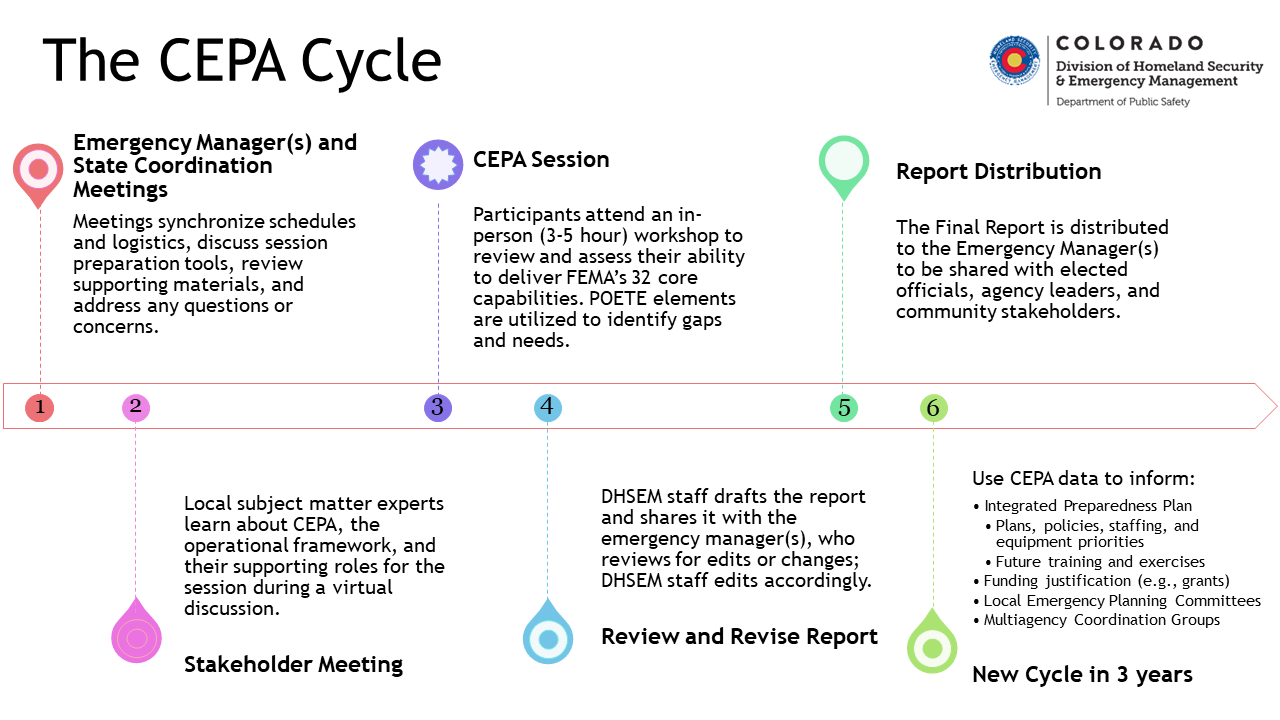CEPA Cycle
There are six steps in the CEPA cycle that repeat every three years. The graphic at the bottom of the page visualizes the steps shared below.
Step One
Emergency Manager(s) and State Coordination Meetings
Meetings will synchronize schedules and logistics, discuss session preparation tools, review supporting materials and address any questions or concerns.
Step Two
Stakeholder Meeting
Local subject matter experts learn about CEPA, the operational framework and their supporting roles for the session during a virtual discussion.
Step Three
CEPA Session
Participants attend an in-person workshop to review and assess their ability to deliver FEMA’s 32 core capabilities. POETE elements are utilized to identify gaps and needs. The workshop is three to five hours.
Step Four
Review and Revise Report
DHSEM staff drafts the report and shares it with the emergency manager(s), who reviews for edits or changes; DHSEM staff edits accordingly.
Step Five
Report Distribution
The final report is distributed to the emergency manager(s) to be shared with elected officials, agency leaders and community stakeholders.
Step Six
Use CEPA data to inform:
- Integrated Preparedness Plan Plans, Policies, Staffing and Equipment Priorities
- Future Training and Exercises
- Funding Justification (e.g., grants)
- Local Emergency Planning Committees
- Multiagency Coordination Groups
